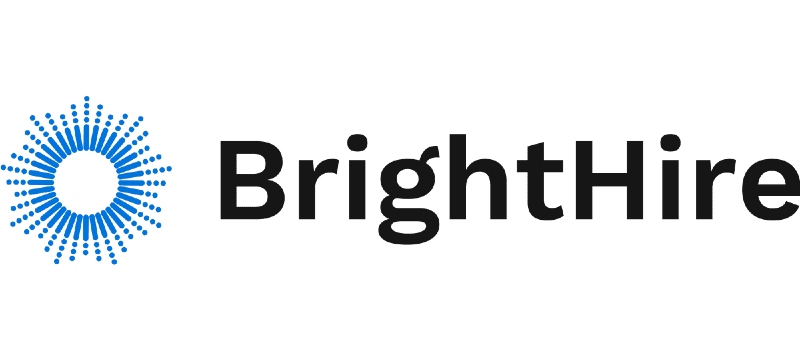Why your approach to interviews isn’t working and how to fix it
Hear about how the interview has evolved in recent years and why you need to keep up.
Get to know how to better focus on the most important of your hiring process: the human part.
Learn how to better assess your hiring processes and technologies, understand how you can better create efficiency, reduce time to hire, and get better quality candidates.



The pandemic fundamentally changed the interview process, quite clearly moving it from in-person to virtual. Yet this isn’t the only change. Now, these exchanges are just as likely to focus on competencies, rather than strengths and weaknesses, and hiring managers and interviewers need to be brought up to speed within this process.
To find out how to bring your interview up to modern-day standards, Kate Graham
Head of Content Labs and Insights at UNLEASH is joined by Brandon Wadley, Founder, and Sr. Recruiting Strategy & Operations Consultant at Noble Talent as well as Hayli Thornhill, Head of Recruiting at BrightHire to discuss everything from where you’re going wrong in your hiring processes and technology choices, and what you can do to create efficiency, reduce time to hire and garner better quality candidates to help manage this process in a difficult labor market.
What is key? Consistency and transparency throughout the entire process.
Hayli Thronhill, Head of Recruiting, BrightHire
Watch on-demand to:
- Uncover what the best candidates expect from today’s hiring process.
- Learn the warning signs that your interview approach needs repair and ways to fix it.
- Find out how to build a feedback loop that helps you continue to optimize interviews and boost candidate experience.
A recent history of changes to interviews
Wadley started the webinar by sharing just how much the interview has changed in recent years. These days it is rare, at least in the initial stages, that the interview is an in-person process; mostly, it is carried out virtually whereby both candidate and interviewer can take notes and use multiple screens. This means it’s more of a challenge for the interviewer to showcase the culture and vibe of a company: in fact, now, it is just on them.
Therefore, with so much pressure on the interview itself, Wadley has started to notice the rise of technology-assisted process completion. He uses different technologies to automate other parts of the process, such as email outreach, in order to focus on the moment that really matters. For Thornhill, this is a good thing as many companies are now looking to better optimize their processes, using data to look at where the sticking points are, and then focus on showcasing culture to candidates and relationship-building with them. In her view, via this use of technology and data, the process has become a lot more human than it was a decade ago.
Candidate expectations are higher than before
With so many headlines around it being a candidate’s market more than ever before – there’s the ongoing so-called Great Resignation as well as well-documented difficulties with hiring – there is pressure on organizations to make the hiring experiences a great one, especially as individuals are likely speaking to multiple different businesses at the same time.
This means as Thornhill explained, companies need to make it clear to the candidate up front what the hiring process will look like, as well as ensuring that the process doesn’t drag on. Consistency and transparency will also be key, especially as the process becomes increasingly digitized. Here, Wadley added, the recruitment process will need to focus on becoming more personalized, whereby candidates and recruiters text at each stage of the process and are happy to jump on calls after each stage to debrief, chat, and check-in. It’s less about ‘throwing them into an interview’ and ensuring candidates are well briefed to truly do their best.
Furthermore, Wadley added that he believes that the old-style adversarial interview has got to go by the wayside. It is much better to be kind, show off the culture, and have a true interchange whereby each party can help understand the other. Importantly, the interviewer has to be honest about what the company is like, too. They should showcase good and the bad of organizational life because if the candidate gets the job and it wasn’t described they’ll be looking for a new role as soon as they start. That is not a successful outcome.
Importantly it is also crucial, as Wadley laid out, that a diverse arrange of interviewers take part in the process. This is to make candidates feel at ease and that they are represented in the culture. And, Wadley noted, that hiring organizations shouldn’t worry if this diversity is overly represented. He explained that is good that organizations showcase where they want their culture to go even if they’re not there yet.
The role of technology
A large part of the webinar conversation focused on the role technology can play in making the interview and hiring process better. For Wadley, it isn’t always about trying to integrate every element of the tech stack and pull it through one system – though this can be useful in giving a helicopter view of a process or giving access to data – but sometimes about getting back to basics. Be less convoluted he said, text the candidate, check-in, and have a call to make sure everything is okay.
However, he did explain that technology can help with eradicating bias by seeing where specific demographics of candidates drop out in the hiring process. It can also help see where hiring is going well, therefore, allowing other areas of the organization to replicate it.
There is also the issue of ‘ghosting’ and connection. Thornhill explained that with interviews more virtual, it is more and more likely that candidates won’t feel connected to either the process or the company. To make it more human, and cut down on that churn, both Thornhill and Wadley recommended interviewers strive to find a deep connection with the candidate and ensure pre-boarding to interview is more than excellent, too.
Yet, technology doesn’t just cause problems. It can help make everything that much better. It can record interviews, it can link certification and qualifications to the interview process, it can showcase best practice training. All in all, working to make everything that much better and showcasing best practices to recruiters and hiring managers. It’s on hiring teams to understand, therefore, what works best at their firm.
